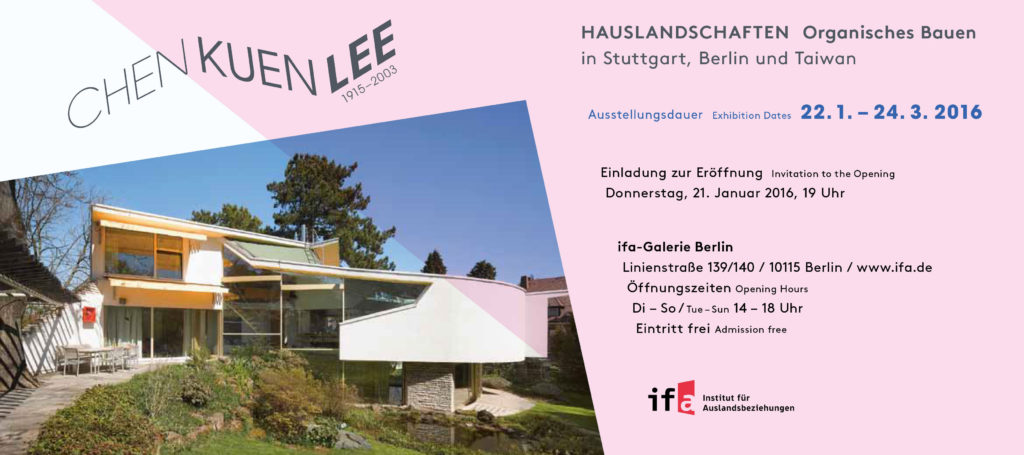
Interlocking angles, crystalline shapes an a garden that extends into the interior – architect Chen Kuen Lee designed extraordinary dwellings characterised by open forms, interrelationships between inside and oputside, and striking landscape design done together with Hermann Mattern and Adolf and Hannes Haag. Lee was a member of the avant-garde in German post-war architecture, and through his research and work with Hans Poelzig, Hugo Häring and especially Hans Scharoun he was able to draw on concepts from the New Building movement and to develop these in his own indepenent work. Here far-eastern philosophy met with the ideas of European modernism.
This exhibition focuses on the architecture of houses and dwellings. The twenty selected buildings cover a wide range of types of dwelling and diverse planning requirements. In the early 1950s Lee set up his office in Stuttgart and made his name as a designer of villas in southern Germany, while his work for Berlin’s Märkische Viertel involved high-rise apartment blocks. Since the late 1960s, the Märkische Viertel has been one of Germany’s most controversial housing projects. Here Lee designed and built a housing estate on a mass scale, with 1240 apartments.
Lee (born in 1915 in Wuxing/China, died 2003 in Berlin) was an influential figure in many ways – in the theory of architecture in his writings, through his building and teaching activities in Taiwan in later years, and as a founder oft he German-Chinese Werkbund, planned together with Häring and Scharoun and initiating an exemplary form of cultural transfer.